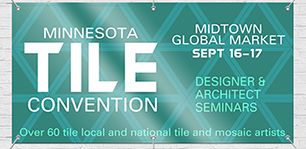Expert-Approved Software for Designing Large Banners
Designing a banner can be overwhelming for non-designers because of the sheer size and the number of people that would see it. Moreover, there is just so many design software nowadays, so much so that it’s hard choose when they all call themselves the best. This is where expert opinion would come in real handy. Let’s hear it from Digital Room’s very own Senior Creative Director, Greg Simmons.
What’s the difference between designing large banners and regular banners?
“Anything large format falls under a larger term called ‘signage’. Signage stands for anything that is hung up or mounted – road signs, indoor signage, wayfinding systems, banners, posters – they’re all signage,” Greg clarifies. He also points out that there’s almost no difference between designing for a 3” x 5” postcard and a 3’ x 5’ banner. “It’s basically the same thing, except for imagery,” he says.
When designing signage, what people need to keep in mind is how far the viewer is going to be from it. One way to gauge that, he suggests, is by printing part of the banner in your intended size into sheets of bond or A4 paper, taping them on the wall, then walking back 20 to 40 feet away to see how big or small the actual signage would be relative to the viewing distance.
What should people look for in a software for designing large banners?
“Anything vector-based is fine,” Greg says. “You don’t have to use a different software to design banners and another for business cards.” Here are his top picks:
- Adobe Photoshop
If the signage design that you have in mind will be heavy on photos with minimal to no text, this is the software for you. Because Photoshop is mainly for image manipulation, scaling could be an issue. - Adobe InDesign
This software is mainly used for designing complex and multi-page layouts such as newsletters, books, and brochures. However, because it’s also vector-based, some designers also use this for banners and posters. - Adobe Illustrator
Want the best of both worlds from the first two Adobe software? Try out Illustrator. Its versatility spans text documents to web graphics, and it being vector-based makes it easy to create scalable design elements such as logos. - Figma
Figma is a browser-based software that already offers unlimited personal files and collaborators with its free Starter version. If you’re working with a team, this software suits you. - Sketch
This Mac-only drawing platform comes with a wide variety of plug-ins and extensions that allow users to edit vectors, create templates, and more. - Lunacy
This free design software by Icons* is fully compatible with Sketch. What makes this software different from the rest is its built-in dark mode and AI-supported features.
Do you have any tips for designing large banners?
Greg has one overarching advice when it comes to designing signage: “Depending on what you are trying to communicate, you want to just make it as clear as possible.”
When it comes to fonts, it’s best to explore and keep an open mind. “Fonts have characteristics and nuances. They all have a feel to them,” he says. Simply put, Sans Serif font types could be fancy, too!
Greg also mentions that it’s important to take note of your design placements depending on the angle people will read it. With A-frame signs, for instance, all the important details should be waist-high. With banners meant to be hung, they must be at eye-level.
For more banner design tips, check out: INSERT LINK
Don’t let the wide range of design software options nor the sheer size of large format prints discourage you from incorporating giant banners to your marketing arsenal. With the right software, it should be easy-peasy!

